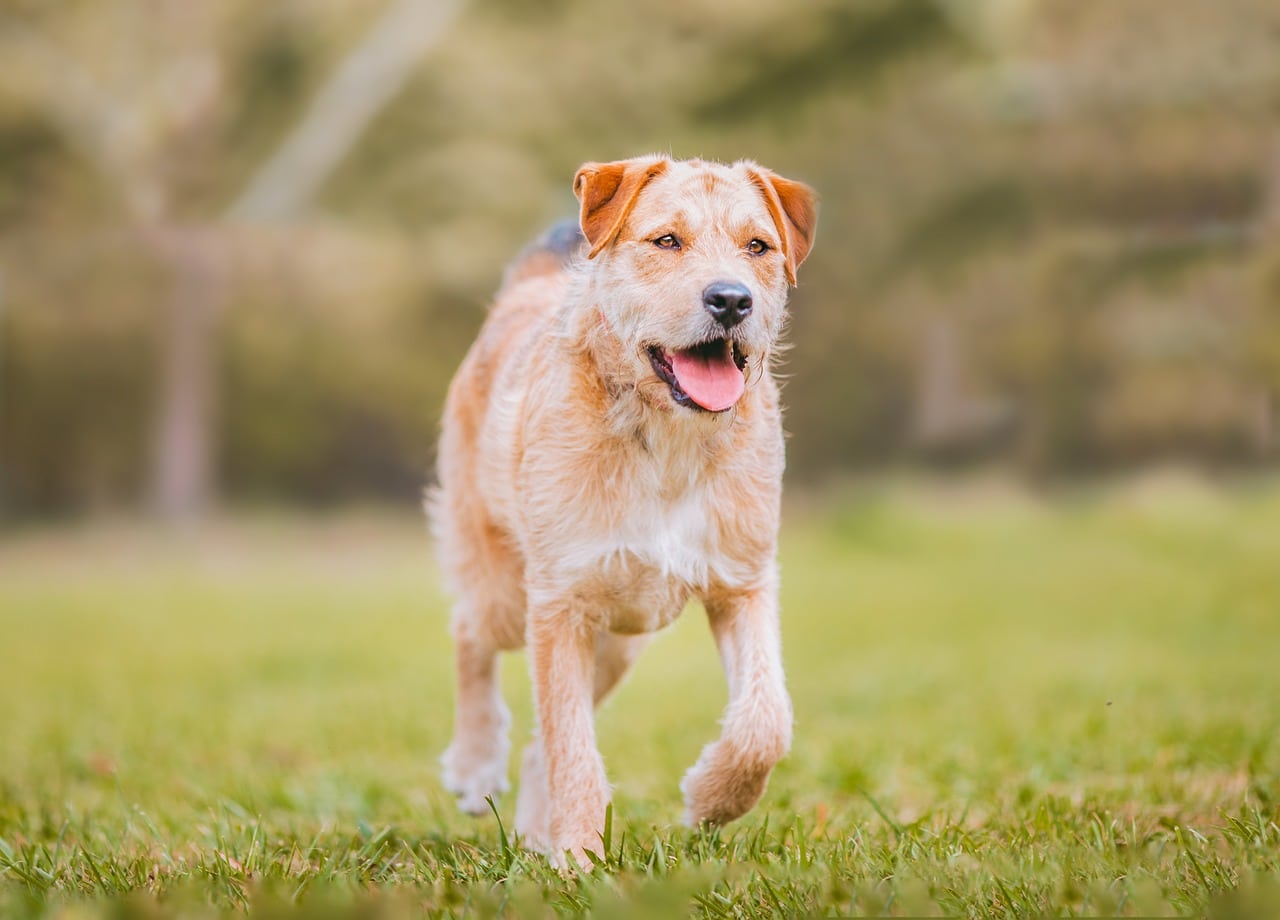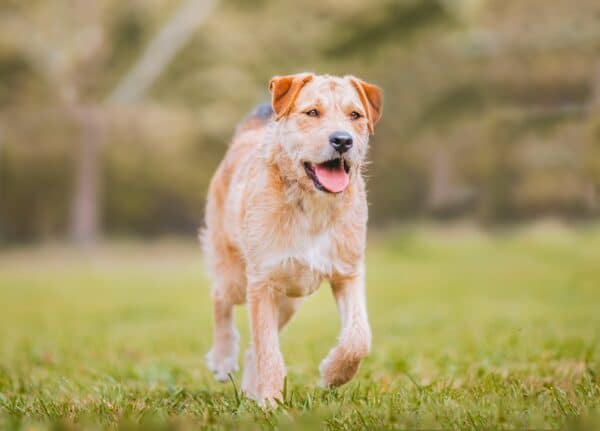Click Below to Skip Ahead
Border Terriers are small dogs with big personalities that yearn to be part of a family unit. Their charming, spunky, and playful traits lend themselves well to families with children. Because of their rich history of hunting foxes, Borders are highly active and intelligent. However, they may not be suitable for every family or lifestyle. Read on to learn more about this breed and see if it’s the perfect fit for you.
Breed Overview
Height:
11 – 16 inches
Weight:
11.5 – 15.5 pounds
Lifespan:
12 – 15 years
Colors:
Red, grizzle and tan, blue and tan, or wheaten
Suitable for:
Single people, families with older children, seniors, first-time dog owners
Temperament:
Sociable, affectionate, cheeky, alert, intelligent, independent
Border Terriers were bred to hunt, and today’s companion Borders still maintain many of their useful hunting characteristics. They are very brave, highly intelligent, and masters at escaping. They absolutely need to feel as if they’re part of the family and generally aren’t suitable for folks who want a “yard dog.”
Border Terrier Characteristics
Border Terrier Puppies
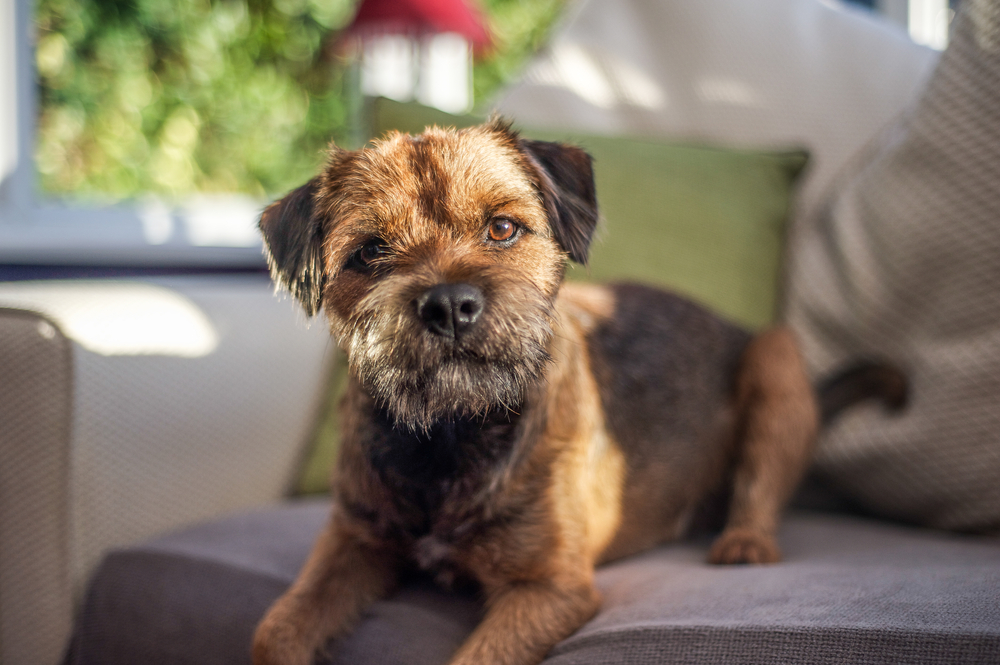
Border Terriers aren’t a rare breed, but they’re definitely not as commonplace in the United States as they are in other countries like England. However, at the time of writing, the American Kennel Club’s Marketplace has several Border Terrier breeders with litters available in states like Oklahoma, New Mexico, California, and Rhode Island.
Because Border Terriers are prone to some genetic diseases, breeders must test their dogs for these conditions before breeding them. The Border Terrier Club of America recommends testing for hip dysplasia and evaluations of the patella and eyes, among others.1
Border Terrier Origin & History
Border Terriers originated around the English-Scottish border of Great Britain and quickly earned their reputation hunting hill foxes. Their speed helped chase down the foxes, and their compact size was incredibly useful for digging into their burrows. However, despite their fox-hunting abilities, they were not used in traditional British fox hunts.
The Border Terrier did not go unnoticed and became an officially recognized breed by the Kennel Club of England in 1920. Ten years later, this brave breed was recognized by the American Kennel Club.
Temperament & Intelligence of the Border Terrier
Border Terriers are playful pups that are always on the go. They have tons of energy and enjoy going for walks and exploring their surroundings. These easygoing dogs are eager to please their human family members. Though they were bred to be country dogs, these adaptable pups can be just as happy living in the city, so long as they’re provided with plenty of opportunities to exercise outdoors.
Border Terriers are intelligent, quick learners. They’re relatively easy to train with the right motivation but can be a little willful at times. They can make great dogs for first-time dog owners, so long as potential owners know what they’re getting themselves into. They shouldn’t expect a dog that holds onto their every word, as Borders can be quite independent. Owners may want to consider attending a few training classes if they’re not yet comfortable with the thought of training their Borders without any experience.
Border Terriers are loving and loyal to their family members but can be wary around strangers. Socialization will help a bit in this regard, but you shouldn’t be surprised if your Border barks or growls when around people they don’t know.
Are These Dogs Good for Families? 🏡
Borders are loving and playful dogs with a seemingly infinite source of energy, which makes them perfect companions for families with children. However, they may be better suited for homes with older kids as their high energy and rowdiness can be too much for extremely young children. Borders can also sometimes be mouthy, which may be a problem for kids who don’t yet know how to respect boundaries. Training your dog will be a huge help in this regard.
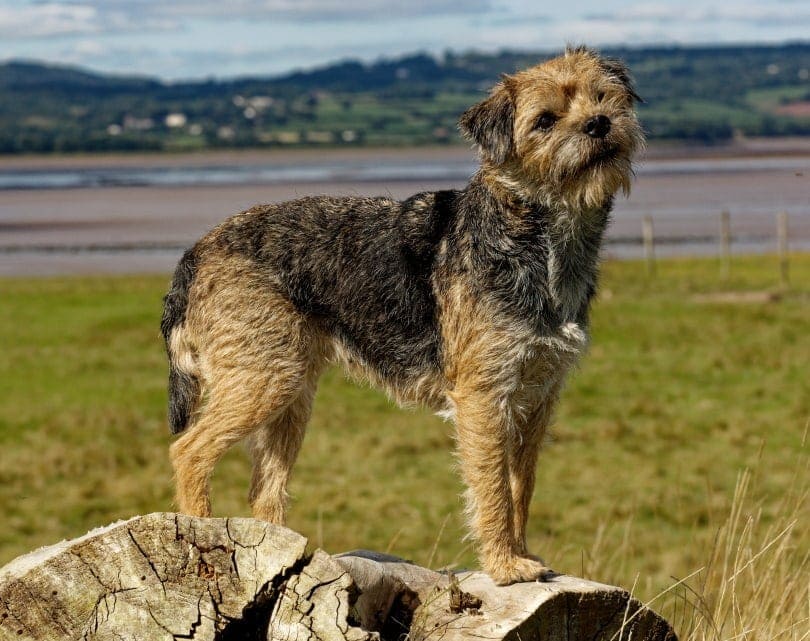
Does This Breed Get Along With Other Pets? 🐶 😽
Border Terriers can get along well with other dogs, especially if they’ve been raised together. In most cases, Borders do well with dogs of the opposite sex. However, the breed has a high prey drive, which may make them incompatible with other household pets like cats, birds, or mice.

Things to Know When Owning a Border Terrier
Food & Diet Requirements 🦴
Border Terriers do well with high-quality dog food diets or home-prepared meals, so long as your home-cooked meals have been given the thumbs up from your vet. Their diet should be well-balanced to ensure they receive all the nutrients necessary.
Adult Borders should be fed twice daily, while puppies will need to eat more frequently, up to four times a day. Regardless of age, treats should not make up more than 10% of your pup’s total daily caloric intake.
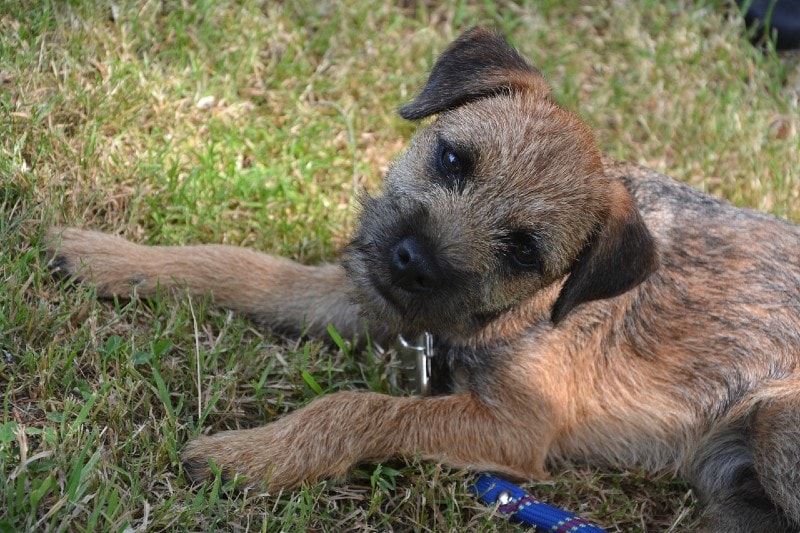
Exercise 🐕
Border Terriers are highly energetic and active dogs that require daily physical activity. They’ll need, at minimum, one hour of exercise daily. You can split this into two or three shorter walks with some off-leash time in a secure area. On top of this dedicated exercise time, your Border will need plenty of playtime and training sessions.
A bored or under-stimulated Border will mean trouble as they’ll find a way to keep themselves entertained, and it’s not usually in a way you’ll appreciate. They will dig up your backyard or destroy your furniture, so make sure you’re providing plenty of physical and mental stimulation to keep bad behaviors at bay.
Training 🦮
Training and early socialization are essential to ensuring a Border Terrier grows to be a well-mannered and balanced adult pup. Borders were bred to think for themselves, which can be quite frustrating for owners when it comes to training. For example, your dog might immediately “stay” when you tell them to, but they will only oblige for as long as they see fit before slipping off and going about their business.
Borders can have willful personalities that call for very patient guidance. They do well with positive, reward-focused training. They are very sensitive pups, and punishment will break their spirits.
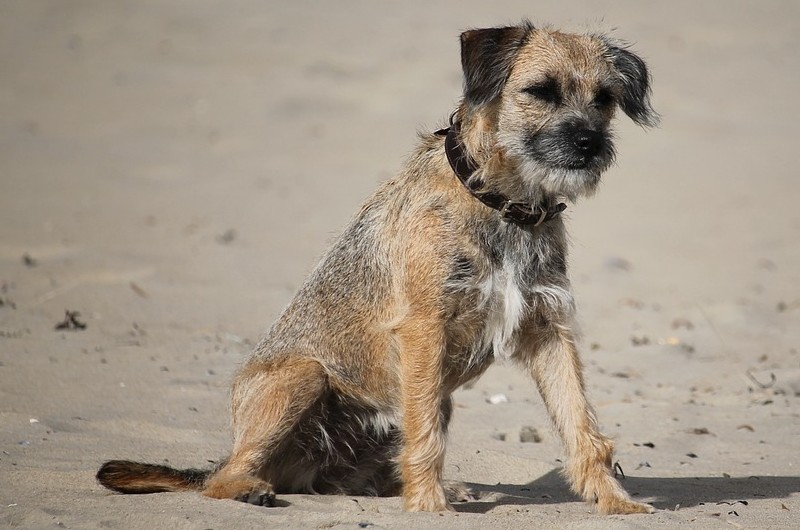
Grooming ✂️
Border Terriers have double coats consisting of a wiry outer coat and a soft, fluffy undercoat. As with most other double-coated breeds, these dogs will shed seasonally. A quick brush once weekly is typically all that’s needed during the non-shedding season to keep the coat looking its best. Owners will want to invest in a high-quality rake or stripping tool to use to get rid of the dead hair during the shedding season.
Baths should be kept to a minimum as the Border Terrier’s outer coat is a natural dirt-repellent. Bathing too often will compromise this ability.
Health and Conditions ❤️
Border Terriers are relatively healthy dogs with long lifespans of up to 16 hours. However, they can be prone to numerous genetic conditions that can be both painful and costly to treat.
Gallbladder Mucocele (GBM) is a condition marked by the distention of the gallbladder by mucus accumulation. This disease can sometimes be caught early, but a recent health report shows that most signs of GBM are not noticeable until surgical intervention is necessary.
Cushing’s disease is an endocrine disorder that sometimes can affect older Border Terriers. It occurs when the adrenal glands overproduce certain hormones.
Canine Epileptoid Cramping Syndrome (CECS) is a genetic condition with unknown causes. Affected dogs will get cramps randomly, ranging in both duration and frequency. A gluten-free diet has been shown to be effective in some cases of CECS.
Border Terriers may also be at risk for hip dysplasia, eye conditions like cataracts and progressive retinal atrophy, epilepsy, gastrointestinal disorders, and allergies.
- CECES
- Eye conditions
- Allergies
- GBM
- Cushing’s disease
- Hip dysplasia
- Gastrointestinal disorders
- Epilepsy

Male vs Female
The only notable difference between male and female Border Terriers is their size. Males are slightly larger than their female counterparts, but not by much. There are no differences in intelligence or temperament.
3 Little-Known Facts About the Border Terrier
1. They are master escape artists.
Border Terriers are highly skilled escape artists because they were originally bred to find their way into tiny underground warrens. If you plan on allowing yours free time in your backyard, you’ll need to make sure your fences are secure because they’ll find a way under or over in search of adventure.
2. They have a strong prey drive.
Borders have a strong prey drive that makes them prone to bolting if they catch a glimpse of something interesting, like the squirrel in your backyard or a rabbit at the dog park. Even the best-trained Border will dash away if given a chance, so it’s important always to keep them on a leash.
3. They have a weather-resistant coat.
The Border Terrier’s coarse and dense double coat consists of a tough, waterproof top coat and a softer undercoat for warmth. Their weatherproof coat was necessary as this breed was born to hunt foxes in all types of weather. Additionally, they have thick and loose skin to protect them from bites from their fox adversaries.

Final Thoughts
Border Terriers are fun, playful, affectionate, and spunky little dogs with big personalities and a lot to offer their families. They yearn to be part of a family unit and do not do well in households that prefer a quiet, background pet. They want to be involved in everything their owners are doing, especially if it involves being physically active outside.
Borders are intelligent dogs but can be tough to train, especially for people unfamiliar with training. Despite their small size, they can be fearless and may get themselves into trouble. They’re big on digging, and because they were bred to fit into small holes, they are excellent escape artists and diggers. Training and socialization are non-negotiables to ensure the pup grows into a well-mannered adult. If you’re new to dog ownership, you may wish to enlist the help of a professional trainer to get you started.
Featured Image Credit: RebaSpike, PIxabay

